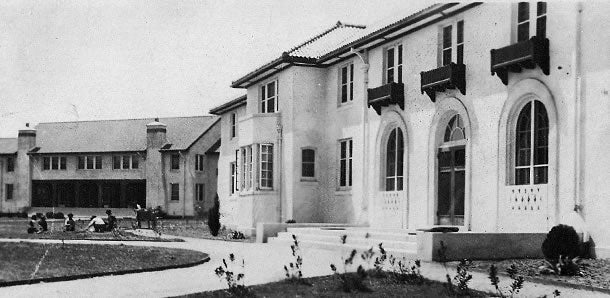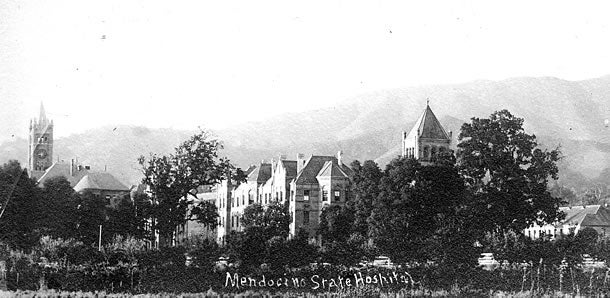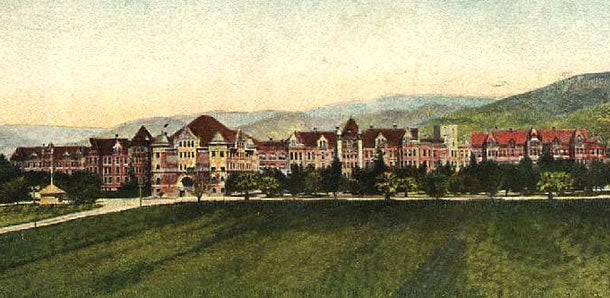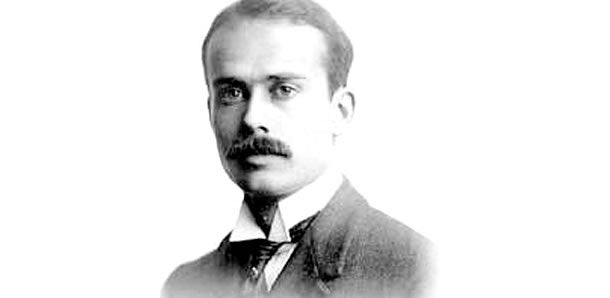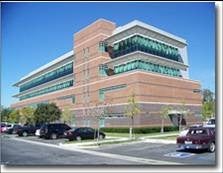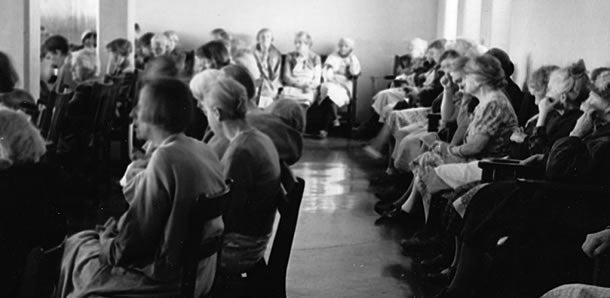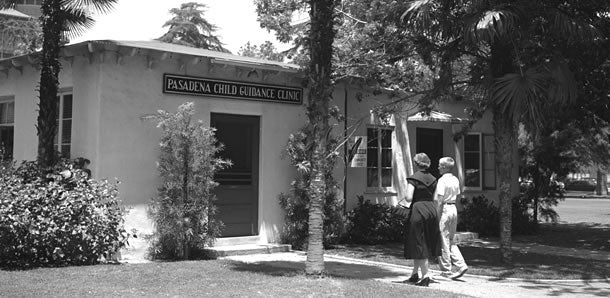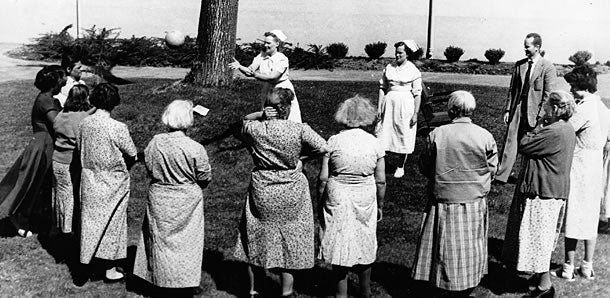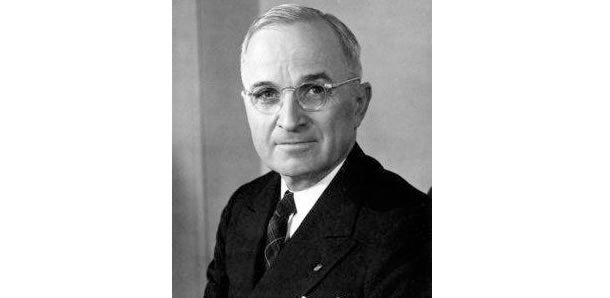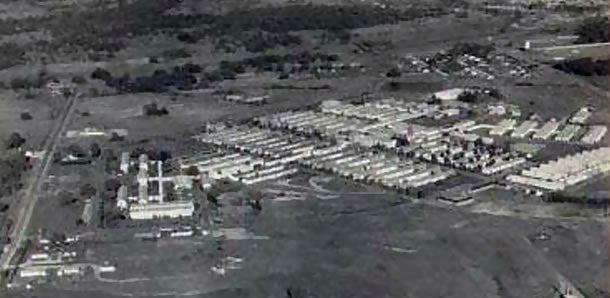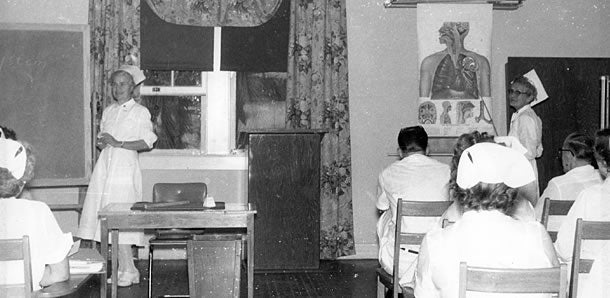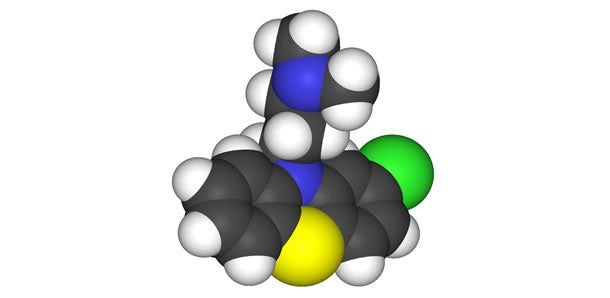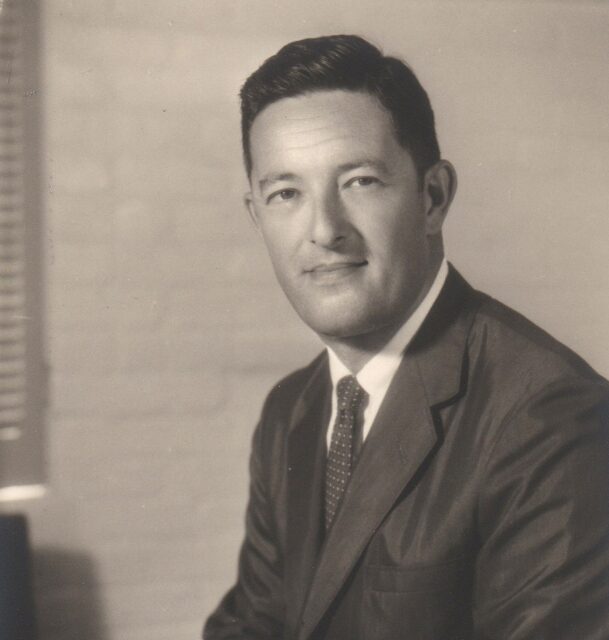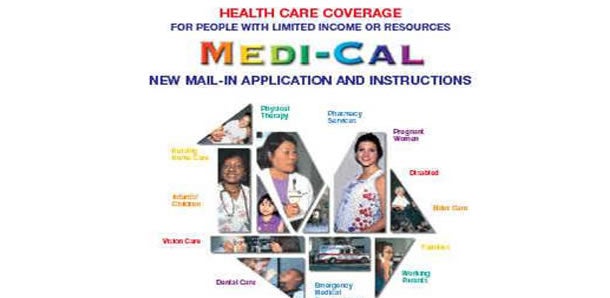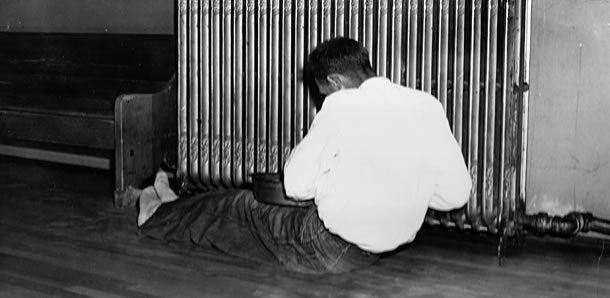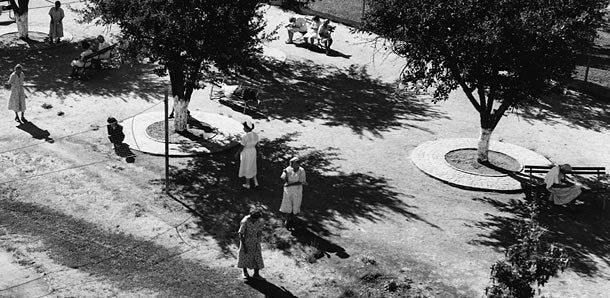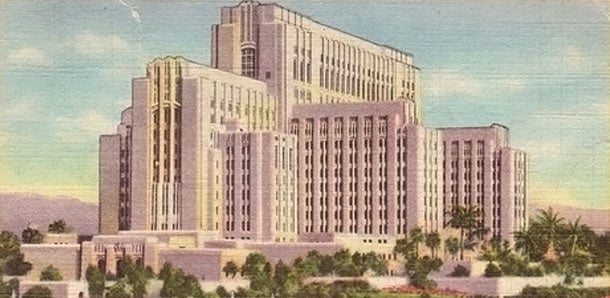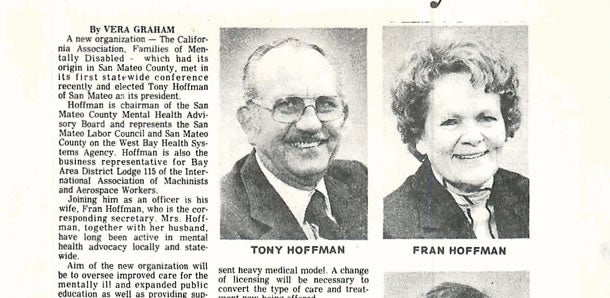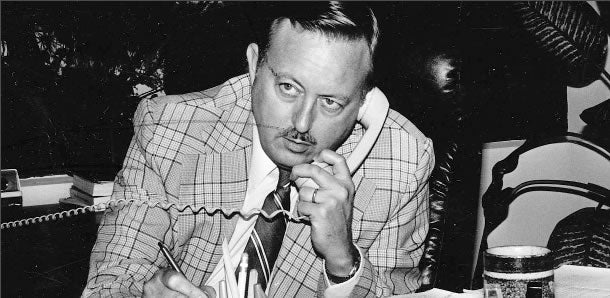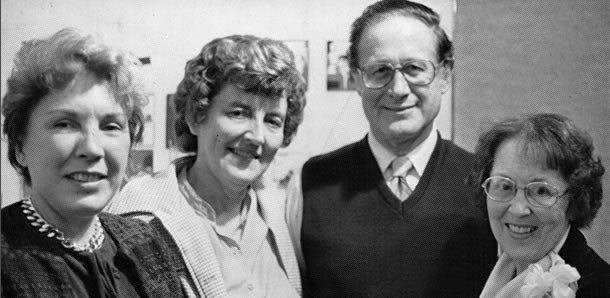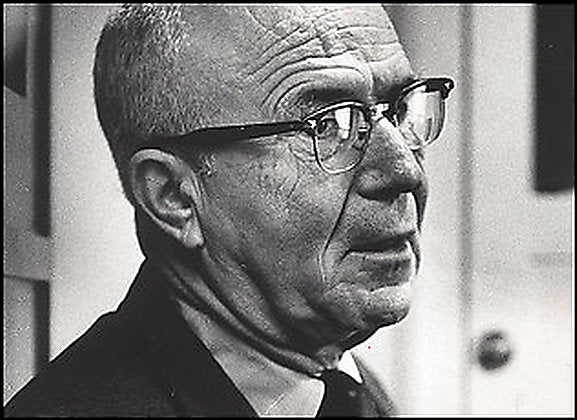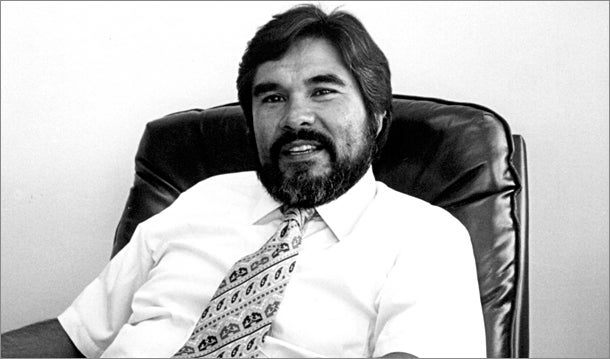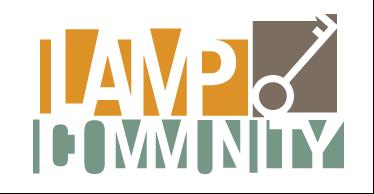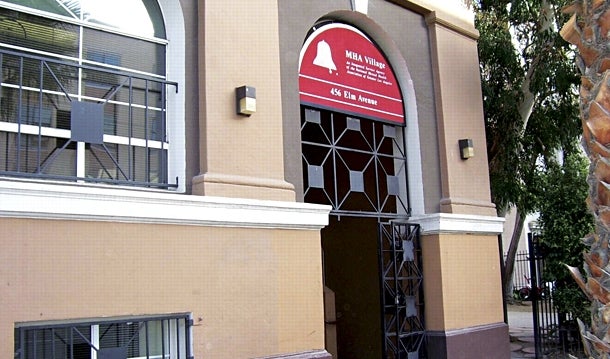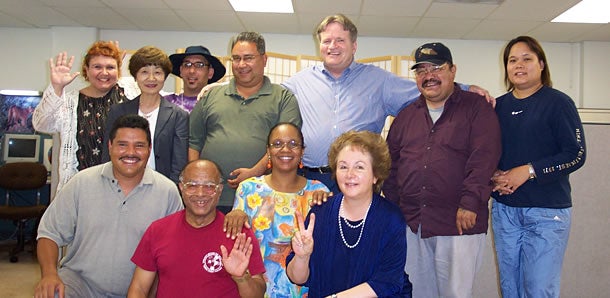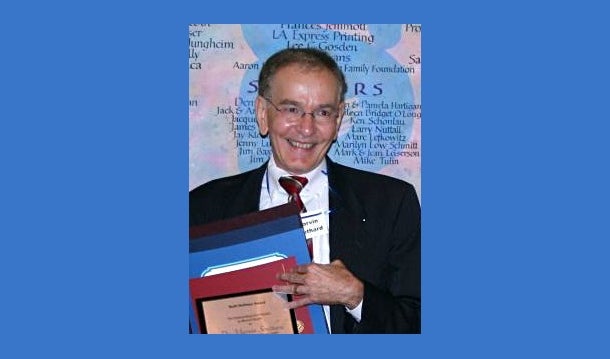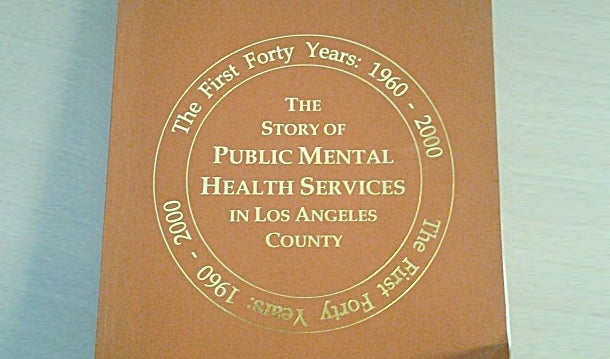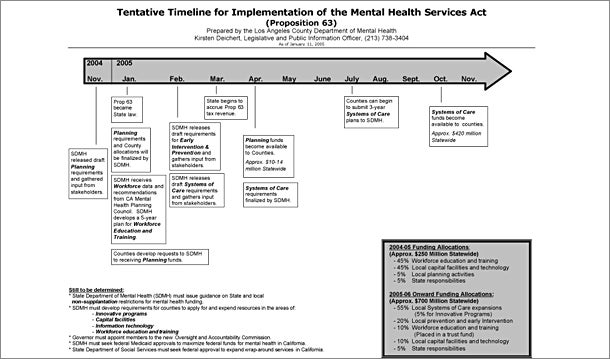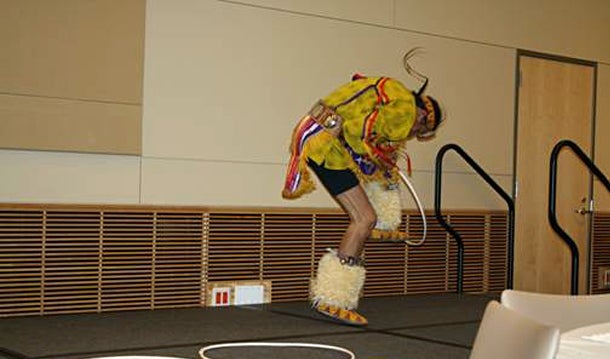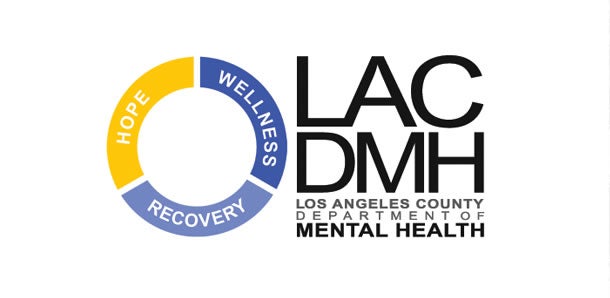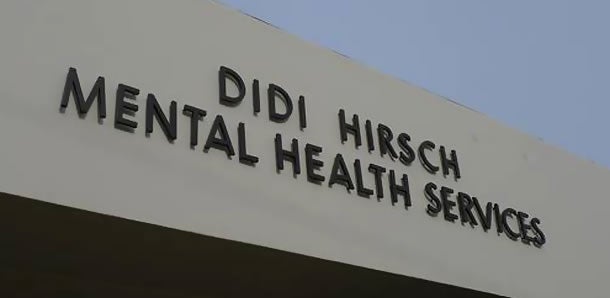
Community Mental Health Centers Act
Stockton State Hospital opened – first for mental illness in California, and was immediately overcrowded. Commitment required: Two medical evaluations by Medical Practitioners, personal evaluation by a judge and a closed court hearing.
Lunacy Law reforms passed: no insane persons to be associated with criminals, no open court hearings, judge not required to assess detainees Institutions named Hospitals instead of asylums.
State Supreme Court found Lunacy Law unconstitutional.
Formation of California State Commission on Lunacy to oversee operations of State Hospitals.
First psychopathic ward opened in San Francisco, in an attempt to reduce State Hospital overcrowding by using urban hospital wards.
Mental Hygiene Committee (Mental Health America of Los Angeles) was formed.
Los Angeles Child Guidance Clinic was established.
Los Angeles Psychiatric Service, the first freestanding, nonprofit community outpatient psychiatric clinic for adults in LA County, established (became Didi Hirsch Community Mental Health Center in 1974).
California Department of Institutions split into Department of Mental Hygiene and Department of Corrections – Youth Authority
State Legislature gave counties with over a million people the authority to create the Office of Public Guardian. LA County established the office effective December 3.
Dewitt and Modesto State Hospitals, former Army facilities opened as “temporary relief of overcrowding.”
Reserpine and chlorpromazine first used in California state hospitals (Dr. Robert Noce, Modesto)
Portals House established by Shirley Weiss, a young Red Cross volunteer, just off Olympic Blvd. in Los Angeles.
LACDMH established; Dr. Harry Brickman named first Director.
State matching funds for mental health increased to 75%; Aid to Totally Disabled expanded to include mentally ill
Lanterman-Petris-Short Act passed, ending indefinite involuntary commitment and encouraged deinstitutionalization (implementation July 1, 1969.
Modesto, DeWitt, and Medocino Hospitals closed, and Stockton and Agnews converted for use of developmentally disabled.
Parents of patients in San Mateo began meetings that led to formation of PAS (Parents of Adult Schizophrenics)
Plan to phase out State Hospitals stopped by Legislature after several violent acts by mental patients.
Tarasoff decision: California Supreme Court ruled that mental health professionals have a duty to protect individuals threatened with bodily harm by a patient.
“Equity Distribution” of new State funds issued to redress the underfunding of some Counties. LA, Riverside, San Bernardino, and San Diego received 50% of new funds.
La Puente Community Mental Health Center opened with an NIMH grant.
First Lady Rosalyn Carter chaired the President’s Commission on Mental Health.
Coast Community Mental Health Center established.
Mental Health Advisory Board refused to approve the County Plan and to allow Mental Health to continue as a subdivision of Health Services. LACDMH re-established as an independent Department; J. R. Elpers appointed Director.
NAMI -National Alliance on Mental Illness (previously known as the National Alliance of the Mentally Ill) founded. Don Richardson of Los Angeles served as Executive Director and later President.
LACDMH took over Olive View outpatient operations in mid San Fernando Valley.
LACDMH launched quality improvement program focused on Department-wide service standards and clinical records.
Augustus F. Hawkins Mental Health Center opened with NIMH grant. Building named after Watts political leader who became California’s first African-American Congressman.
The California Model issued.
Los Angeles Day Treatment Center, now under LACDMH, moved to Hollywood Blvd as Hollywood Mental Health Services.
Roberto Quiroz appointed Director of LACDMH.
LACDMH launched a quality improvement program focused on Department-wide service standards and clinical records.
Step Up on 2nd Street opened in West Los Angeles.
AB 3632 passed in California, requiring mental health assessment of children referred by school districts pursuant to an Individual Education Plan.
LAMP Drop-in Center opened on Skid Row.
Bronzan-Mojonnier Act included provisions for: 1.) identification of service shortages resulting in the criminalization of the mentally disordered, 2.) community support for homeless mentally disordered persons, 3) vocational services, and 4) services for seriously emotionally disturbed children.
AB 377 expanded Ventura County pilot project providing coordinated and closely monitored community and home-based services for severely emotionally disturbed children
River Community opened to provide integrated services for co-occurring mental illnesses and substance abuse.
“Declaration of Conscience” by 7 psychiatric leaders urged action to “prevent the collapse” of emergency and acute psychiatric care in LA County.
Homes for Life Foundation established.
AB 3777 (Wright-McCorquodale-Bronzan Mental Health Act) funds three pilot projects to combine treatment and rehabilitation and provide integrated, flexible services 24/7. One of these projects becomes the Village Integrated Services Agency (ISA) in Long Beach.
California Senate Office of Research published “California’s Mental Health System: The History of Neglect.”
Realignment of mental health resources to County control.
Harbor View Adolescent Center established in Long Beach.
The AB 904 Planning Council published California Mental Health Master Plan in October.
Areta Crowell appointed LACDMH Director.
Funding derived from reducing 100 state hospital beds approved for six Integrated Service Agency programs in LA County, under the title PARTNERS.
California Institute for Mental Health (CIMH) founded by local county mental health directors.
The California Mental Health Planning Council (CMHPC) established through legislation as the new advisory board structure.
LACDMH contract with Los Angeles Unified School District to provide school-based mental health services, the first such contract in the US.
LACDMH launched Children’s System of Care (CSOC).
Bill Compton became Executive Director of Project Return, began expansion to more than 100 clubs under MHA auspices.
California instituted Early and Periodic Screening, Diagnosis and Treatment (EPSDT)
Medi-Cal Mental Health Managed Care implemented.
LACDMH began inpatient consolidation phase of Medi-Cal Mental Health Managed Care.
Mental Health Parity Act (federal) eliminated financial caps on mental health benefits in health plans at companies with more than 50 employees. By 2000, more than 20 states enacted similar legislation.
100% funding (50% state/50% federal) for Medi-Cal children’s services (EPSDT) instituted.
Camarillo State Hospital closed.
Adult Targeted Case Management Services created.
Office of Consumer Affairs established within LACDMH.
California became first state to require all counties to develop cultural competence plans as a tool to assess disparities and identify strategies for addressing those disparities.
Marvin Southard appointed LACDMH Director.
Outpatient consolidation phase of Medi-Cal mental health carve-out begun.
LACDMH launched “Comprehensive Community Care” Process to create a client-centered, family-focused integrated mental health system.
The California Department of Mental Health established Office of Multicultural Services.
White House Conference on Mental Health.
Surgeon General's Report on Mental Health.
Governor Gray Davis signed Assemblywoman Helen Thomson’s Parity Bill, eliminating discrimination practices for designated diagnoses indicating severe mental illness in adults or serious mental disorders in children.
LACDMH marked 40th anniversary with the book, “The Story of Public Mental Health Services in Los Angeles County.” The Little Hoover Commission published “Being There: Making a Commitment to Mental Health.” LACDMH published Comprehensive Community Care strategic plan focused on wellness, remission and recovery. California legislature enacted AB 2034. LACDMH established Older Adults Bureau for separate planning and services.
U.S. Surgeon General published “Mental Health: Culture, Race, and Ethnicity.”
LACDMH published Comprehensive Care Progress Report.
LACDMH hosted the first mental health forum for faith leaders to create awareness, fight stigma and create community supports.
First Mental Health Urgent Care Center opened in Long Beach under contract with Telecare Corporation.
LACDMH established Transitional Age Youth Division for separate planning and services.
LACDMH assumes operation of Augustus F. Hawkins Comprehensive Mental Health Center on the campus of Martin Luther King Jr. Hospital.
California Mental Health Planning Council publishes the “California Mental Health Master Plan: A Vision for California.”
Mental Health Services Act (Proposition 63) passed by ballot initiative in November, creating a new funding stream for mental health and emphasizing new county-based recovery and wellness programs.
LACDMH rolled out new Integrated System for electronic claiming.
Mental Health Services Act (MHSA) became effective on January 1, 2005.
Mental Health Services Oversight and Accountability Commission established.
California Mental Health and Spirituality Initiative launched by a group of advocates and adopted by the California Institute for Mental Health.
LACDMH adopted “Partnering with clients, families and communities to create hope, wellness and recovery” as its new vision.
New mission statement: “The Los Angeles County Department of Mental Health enriches lives through partnerships designed to strengthen the community’s capacity to support recovery and resiliency for clients and their families.”
Martin Luther King Jr. Hospital closed by County leaving only a multi-service ambulatory care center.
LACDMH celebrated its 50th anniversary and, in partnership with UCLA’s Center for the Study of Public Mental Health, launched the History of Public Mental Health website
LA County began implementation of its Prevention and Early Intervention Plan.
The California Mental Health Services Authority (CAlMHSA) formed by Joint Powers Authority (JPA) of California counties.
LACDMH joined CalMHSA with approval from the Los Angeles County Board of Supervisors.
LACDMH PBS series, Profiles of Hope, won Emmy Award for best LA Area informational/public affairs series.
LACDMH launched monthly Meeting of the Minds, an online TV show.



